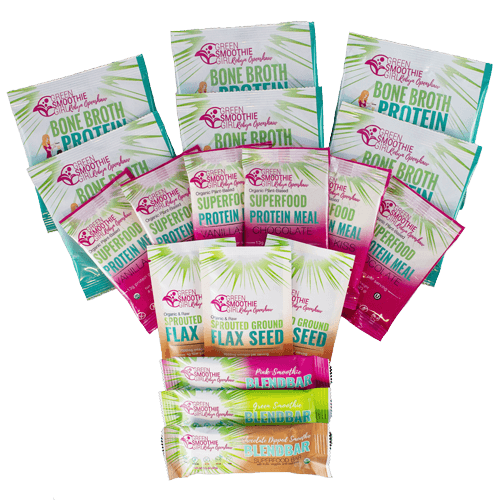The Benefits of Fasting for Weight Loss and More!
Can you really skip meals to better health?
If you grew up anything like me, your parents never let you skip a meal and you always had to clean your plate to “keep your energy up.” And probably, if you’ve ever tried losing weight, someone told you to eat 5+ small meals throughout the day.
However, the internet is also rife with claims about the benefits of fasting. How is it possible that these two polar opposite ideas are permeating the health and wellness industries?
Is fasting healthy, or not? Well, it depends….
Over the last few years, fasting has gained notoriety. A quick Google search for “fasting” will show you buzzwords like partial-day fasting, time-restricted eating, water only fast, fasting-mimicking diet, and more. All of this information can be confusing.
My goal here is to explain the different types of fasting, the benefits of fasting, finding the fast that works best for you, and how to get started.
Cut Through the Confusion: TYPES OF FASTING
There is a lot of information all over the media and internet about fasting. To get the most out of fasting, we must understand what we’re talking about here. Fasting is a general term used to describe a complete absence or extreme reduction in calorie intake. A fast can be as trivial as eating only once or twice a day or as extreme as consuming nothing but water for days/weeks!
When we talk about fasting, we need to make sure to differentiate between the different types of fasts. Different kinds of fasting have different benefits and uses.
WATER ONLY FAST
As the name implies, people that engage in water only fasts do not eat or drink anything with nutrients. The only thing you have during a water-only fast is water. This is the most extreme form of fasting. Most people will find this difficult, if not impossible, to accomplish. Research has looked at water-only fasts lasting between 24 hrs to as much as 382 days! (*For health/safety water only fasts longer than a few days often require mineral supplementation.) (1)
TIME-RESTRICTED EATING (TRE)
Partial day fasting, which includes time-restricted eating (TRE) and time-restricted feeding (TRF), has probably gained the most attention. This form of fasting restricts when you eat. You may also hear people refer to this type of fast as the 16:8 fast.
For example, many people will skip breakfast so their first meal is around noon. The last thing they would eat during the day would be at 8. As a result, they are fasting 16 hrs while only eating for 8 hrs. Another example would be eating once a day to accomplish a 23:1 fast. If you’re interested in learning more about TRE, check out this interview I did with Dr. Satchin Panda.
FASTING-MIMICKING DIET (FMD)
The fasting-mimicking diet (FMD) allows you to eat throughout the day but heavily restricts your calorie intake. In both animal and human studies, restricting your calorie intake to 500-800 calories a day for up to a couple weeks gives you the benefits of a water-only fast without the struggle.
Fasting Benefits: We Had It All Wrong
So how is fasting good for the body? We used to think that skipping meals would destroy your metabolism. The gold standard for weight-loss diets was to eat several small meals from the time you woke up until the moment you went to bed. It turns out that fasting benefits for the body include improving energy production, cell repair, and detoxification. When we constantly consume food, our body is firing on all cylinders to break down nutrients for energy and storage and can neglect other pathways involved with maintenance.
Think of fasting like you think of restarting your computer. I’m sure we’ve all dealt with a computer at work that is slower than a snail. The memory and processing power of the computer is all backed up from days of being left on. We instinctively restart the computer and like magic, there are no more glitches. Fasting is the reboot for your body.
1. Fasting Boosts Energy Production
You’re probably wondering, “How can I not eat and boost my energy?” Well, our cells have special survival mechanisms when food is scarce. Eventually, your body will start to shift from relying on glucose from food to mobilizing stored glycogen, fat, and protein to produce energy. (2)
After a while your cells will create more mitochondria. This allows them to become incredibly efficient at using fat as a primary fuel source. Fat actually supplies more than double the amount of energy than glucose does. Every pound of body fat can provide you over 4,000 calories! This allows you to produce a tremendous amount of energy even when you’re not eating.
2. Fasting Improves Cellular Repair
Fasting allows our body to take a close look at each cell’s efficiency. You can think of this like an internal audit. Without a profitable year, companies often look to see if employees or departments are using more resources than they need. As a result, layoffs and cutbacks happen. Our cells go through this same process.
If we have cells that are producing too many free radicals, wasting calories, or simply not doing their job, they get eliminated. This process is referred to as autophagy or apoptosis. (3) When this happens, cellular material can then be recycled and used to create new, healthy cells if needed.
3. Fasting Enhances Detoxification
Fasting allows our cells to bolster their defenses. When we limit/eliminate our food intake, pathways get turned on and off. One of the pathways that gets turned on involves sirtuins and the enzyme superoxide dismutase. (4) This helps to protect from DNA damage and get rid of toxins. Fasting acts as a way for your body to play catch up with much needed maintenance.
4. Fasting Helps You Lose weight and reduce inflammation
The three above benefits of fasting are direct effects of abstaining from food. Weight loss is actually just a side effect of the fast.
Fasting has been shown to reduce inflammation. (5) Many people don’t realize inflammation results in fluid retention. People with high levels of inflammation will also have higher levels of fluid. Fasting can quickly decrease that inflammation and as a result, get rid of that extra water weight.
Fasting is also the fastest way to lose weight because it puts you in a caloric deficit. Whether it’s TRE, FMD or a water only fast, you tend to eat less food. Plus, fasting doesn’t appear to have a major effect on your hunger hormone ghrelin. (6) By following a fast you’ll be eating less and your body will be relying on its fat reserves to keep you energized all day.
Fasting Precautions
Fasting is generally a great, health-boosting ritual. However, there are some situations that require extra forethought and guidance from a medical professional before you attempt a fast. For example, fasting is not recommend while pregnant or breastfeeding. If you have any special medical conditions, you’ll need to consult with your physician about fasting.
As we discussed in our blog How to Get Rid of Brain Fog, skipping meals or shortening your eating window may be difficult if your brain is inflamed or if you are hypoglycemic. Go slowly and eat plenty of nutrient-dense foods when you do eat.
Not every diet is a fit for everyone, but if you adjust slowly, some version of fasting may be a big boost for you.
How To Get Started
Now that you’re an expert in fasting, you’re probably wondering how to start fasting. I find that TRE (time-restricted eating) or FMD (fasting-mimicking diet) are great places to start. These allow you to eat throughout the day, but restrict how much you eat. By following this method, we can get the benefits of fasting without the risks associated with water only fasts.
When to start fasting is as important as how to start fasting. At first, it may be difficult to reel in your food intake. I always suggest starting a fast on the weekend or whenever you don’t have demands like work. Most people tend to settle into their fast after a day or two.
If your body is not used to going long periods of time without food, it may be best to start slowly, with a gentle time-restricted eating plan, or a fasting-mimicking diet.
Before you get started with your fast, make a plan. If you think you can make your way through the day and haphazardly make the right food choices, you are wrong. Once you decide when you will fast, start planning out foods and meals that will keep you under 1,000 calories to start. You will want to work your calorie intake down each day.
Ready to Start Fasting Effectively?
If you are looking for an easy, step-by-step fast, I highly recommend the 3-Day Flash Fast by my friend Robyn Openshaw.
I have tried many different fasting programs and methods, and this is one of my favorites. In fact, I just recently completed the Flash Fast last month and felt amazing. I didn’t even get too hungry!
When you sign up, you’ll get:
15 “fasting-compliant” mini-meals shipped to you—5 each day, for 3 days.
Access to a private Facebook community.
A booklet teaching you what the proven benefits of modified fasting are
The Flash Fast might be the most powerful disease-preventative thing you can do for yourself.
Still wondering if this is the right choice for you? No problem! Check out my interview with Robyn Openshow (below) to learn more.
Bridgit Danner, LAc, FDNP, is trained in functional health coaching and has worked with thousands of women over her career since 2004. She is the founder of Women’s Wellness Collaborative llc and HormoneDetoxShop.com.
Check our her easy 5-Day DIY Detox Guide here!




